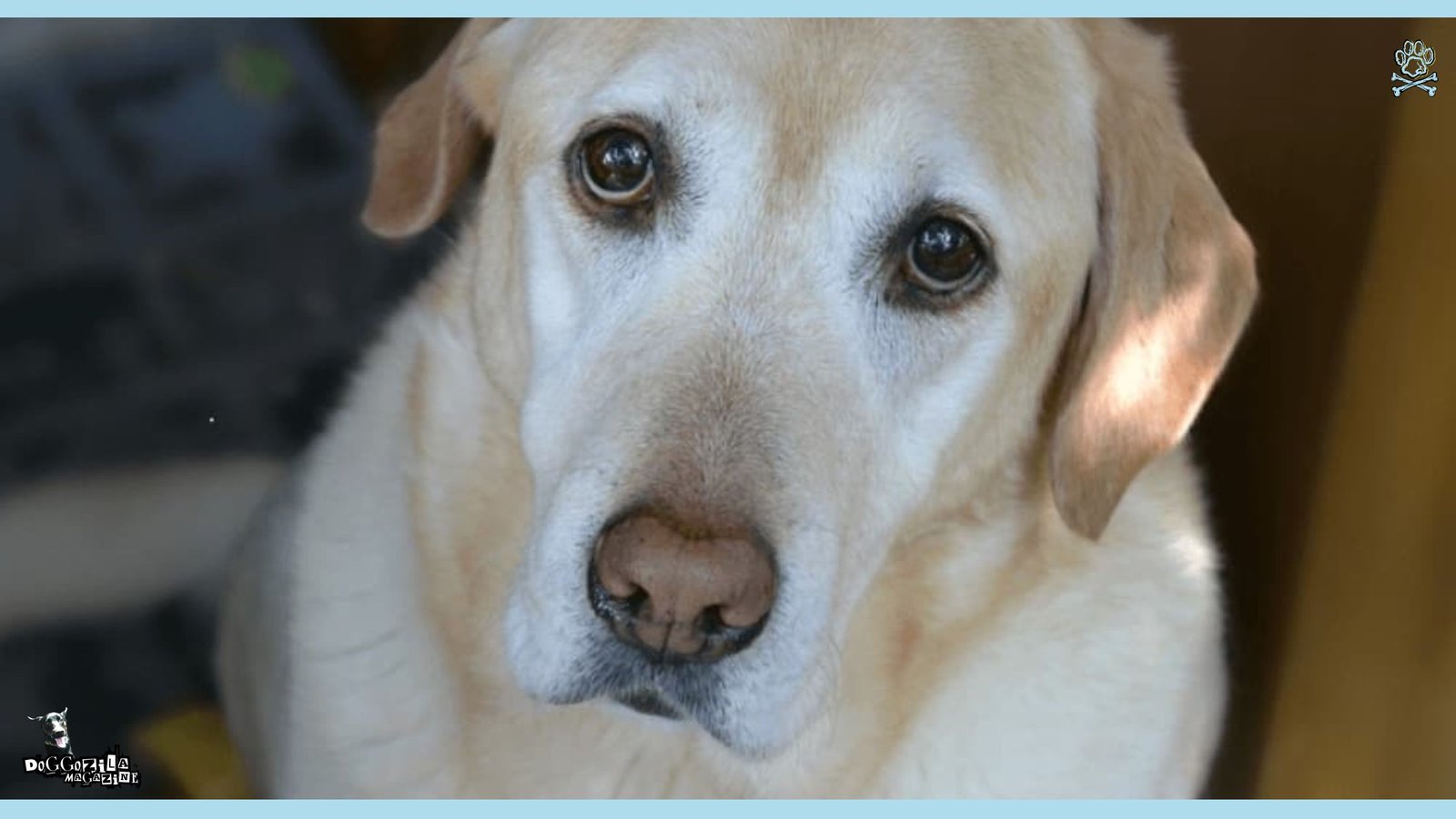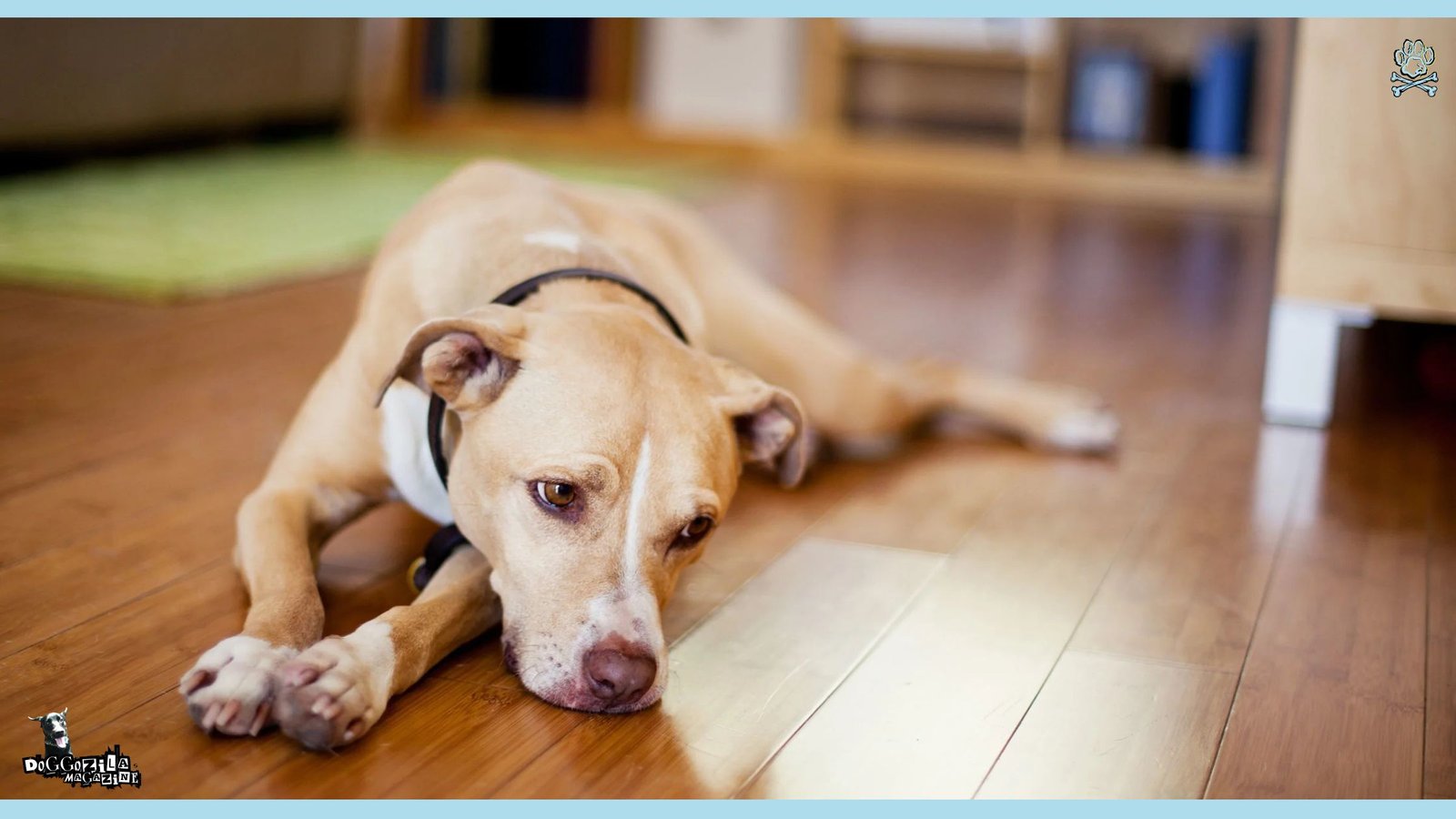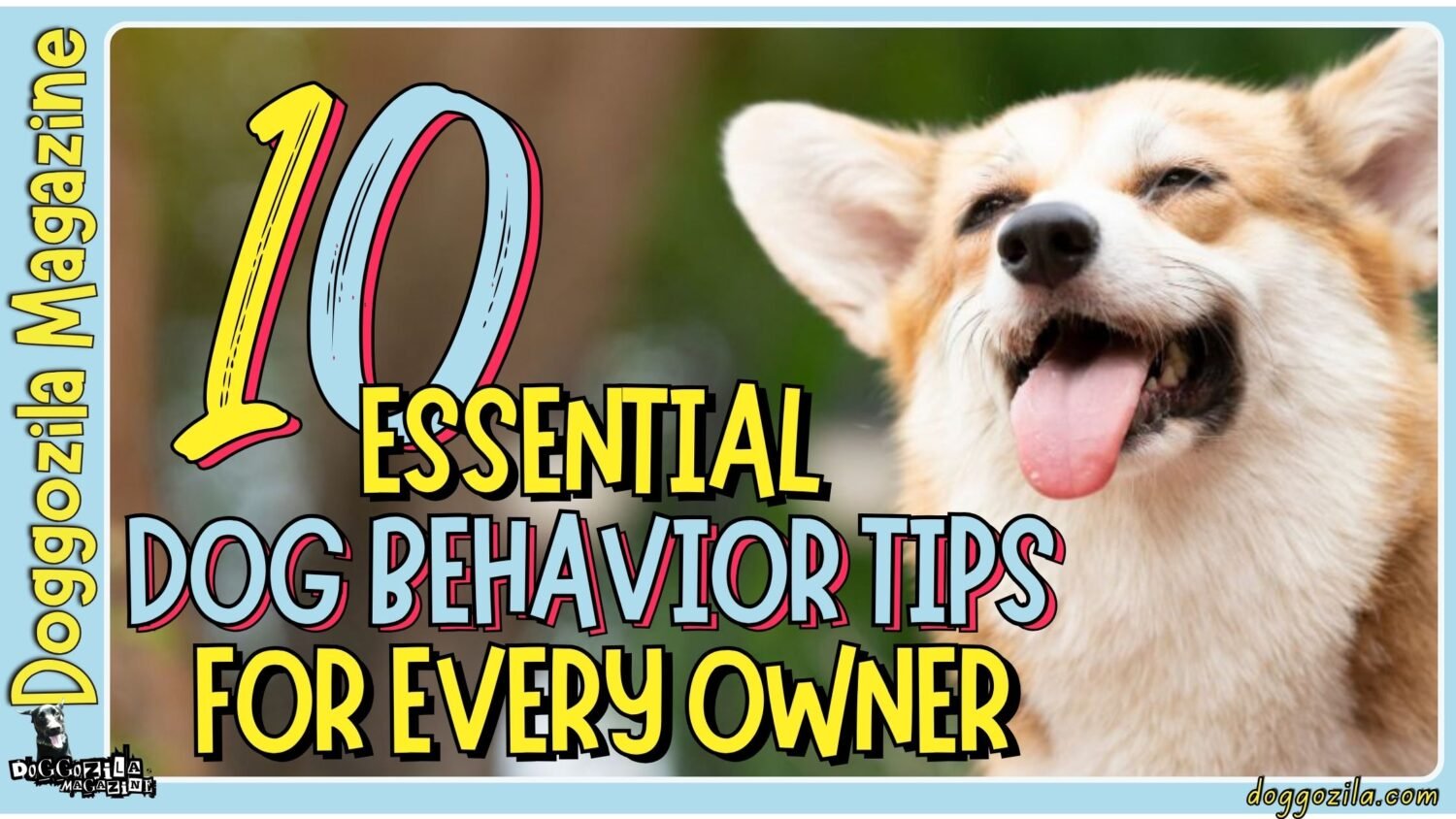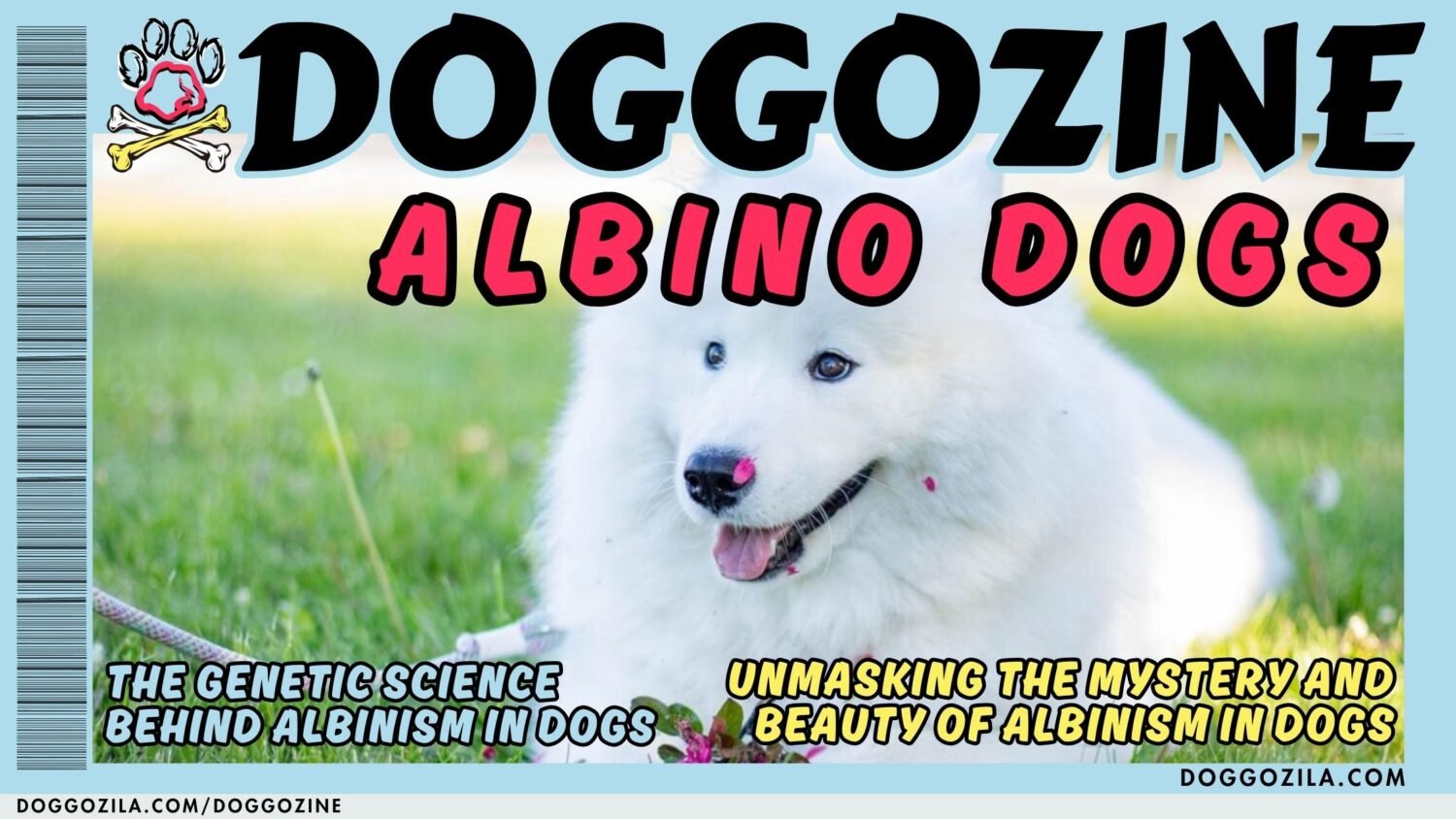As dog owners, we share an incredible bond with our furry companions. They greet us with wagging tails, comfort us during tough times, and fill our lives with joy. But what happens when our happy-go-lucky pup seems off? Dogs experience a wide range of emotions, including sadness and depression, and it’s our responsibility to recognize when they’re struggling. Learning how to know if your dog is sad isn’t just about spotting obvious signs, it’s about understanding subtle changes in behavior, body language, and routine.
This comprehensive guide will help you decode your dog’s emotions, identify potential causes of their sadness, and provide effective strategies to bring back their wagging tail. Let’s embark on this journey to better understand our canine friends and ensure their emotional well-being. Remember, early detection can prevent more serious issues. Your vigilance shows your deep love for your pet.
„That tail isn’t wagging, the food bowl is still full,
and your best friend’s eyes seem a little less bright,
could your dog be feeling sad? “

HOW TO KNOW IF YOUR DOG IS SAD: RECOGNIZING THE SIGNS
Understanding how to know if your dog is sad starts with observing changes in their normal behavior. Dogs communicate their emotional state through physical and behavioral cues, and recognizing these signs is crucial for any pet owner. These signs can develop gradually or appear suddenly after a triggering event. Consistent observation helps you catch these clues early. Learning how to know if your dog is sad is a fundamental skill for a caring owner.
A sad dog might exhibit decreased interest in activities they once loved, whether it’s playing fetch, going for walks, or greeting you at the door. Their energy levels may drop significantly, leading to more time spent sleeping or lying around. You might also notice changes in their eating habits, such as loss of appetite or disinterest in treats. Additionally, their overall body language might seem more withdrawn, with ears pulled back, eyes looking droopy, and a general lack of enthusiasm.
Key Changes to Watch For and Learn How to Know If Your Dog Is Sad
When learning how to know if your dog is sad, pay close attention to sudden shifts in their behavior. A normally social dog might start hiding or avoiding interaction, seeking solitude under furniture or in quiet rooms. They may become less responsive to commands or cues they previously knew well. Some dogs might display clingy behavior, sticking close to their owners and seeking constant reassurance.
Conversely, others might become more irritable or even show uncharacteristic aggression. These changes often indicate underlying emotional distress that needs addressing. For example, a dog that once loved car rides might now hesitate to jump in the car. Another sign is a lack of enthusiasm for favorite toys or games.
Changes in vocalization, like more whining or howling, can also be a red flag. It’s important to note that these behaviors can sometimes stem from medical issues, so a vet check is wise. Keeping a daily log can help you track patterns and provide valuable info for your veterinarian. Early intervention based on these signs can make a big difference. This is a core part of understanding how to know if your dog is sad.
Physical Symptoms of Dog Sadness
Physical signs can also provide clues about your dog’s emotional state. A sad dog might have a noticeably different posture, like hunched shoulders, lowered head, and tail tucked between their legs. Their facial expressions may change, with eyes appearing sad or avoidant, and they might sigh or whimper more frequently.
Some dogs engage in excessive licking, particularly of their paws, as a self-soothing behavior. Changes in sleep patterns, either sleeping more than usual or experiencing restlessness, can also be indicative of sadness. You might also see weight loss or gain due to appetite changes.
A dull coat or skin issues can sometimes reflect poor mental health. If your dog is shedding more than usual, it could be stress-related. Always rule out pain or illness with a vet visit first. These physical cues are often easier to spot than behavioral ones. Combining both types of observations gives a fuller picture and is essential to figure out how to know if your dog is sad.
How Important is The Context and Timing to Know If Your Dog Is Sad?
Always consider the context when assessing your dog’s mood. Recent changes in the household, such as a move, a new family member, or the loss of a companion, can trigger sadness. The timing of these behavioral changes is also important, if they coincide with a specific event, it’s likely related.
However, if the signs persist without an obvious cause, it might indicate a deeper issue. Keeping a journal of your dog’s behavior can help track patterns and provide valuable insights for your veterinarian. For instance, note if the sadness started after a change in your work schedule. Seasonal changes, like less daylight in winter, can also affect some dogs.
Comparing current behavior to their baseline normal is key. Don’t ignore subtle shifts that might seem minor at first. Context helps you determine if it’s a passing phase or something needing action. Your vet will appreciate these details during a consultation. This holistic approach is the best way to understand how to know if your dog is sad.
🔑 Key Points: The first step is to observe changes from your dog’s normal behavior, such as decreased interest in activities, lower energy, changes in appetite, and withdrawn body language.

HOW TO KNOW IF YOUR DOG IS SAD THROUGH BODY LANGUAGE?
Dogs communicate primarily through body language, and understanding their signals is essential for recognizing their emotional state. A happy dog typically has a relaxed posture, soft eyes, and a wagging tail that moves in wide, sweeping motions. Conversely, a sad or stressed dog might display tense muscles, a lowered head, and a tail that is tucked or held stiffly. Their ears might be pinned back against their head, and they might avoid direct eye contact.
By familiarizing yourself with these cues, you can better understand your dog’s feelings and respond appropriately. Subtle changes like a lack of “wiggles” during greetings can be telling. Practice observing your dog in different situations to learn their normal language. This is a critical component of how to know if your dog is sad.
Interpreting Tail Positions and Movements to Know If Your Dog Is Sad
A dog’s tail can tell you a lot about their emotional state. Contrary to popular belief, a wagging tail doesn’t always mean happiness, it can indicate arousal or even frustration. A tail held high and stiff might signal agitation, while a tail tucked between the legs suggests fear or anxiety. A relaxed, neutral tail position varies by breed but generally indicates contentment.
Observing the speed and direction of the wag can also provide insights, for example, a tail wagging more to the right often indicates positive emotions, while left-sided wags might suggest negativity. Some dogs have naturally curly tails that make reading harder, so know your breed’s norms.
A tail that is wagging slowly or barely moving can be a sign of uncertainty or sadness. Watch how the tail moves during interactions with other dogs or people. Changes in tail carriage from day to day can be significant. If your dog’s tail is usually up but now hangs low, take note. Combining tail observations with other body language gives the best insight into how to know if your dog is sad.
Related Article Recommendation:
Do Dogs Cry Tears Of Sadness? What are Tear Stains?
To Know If Your Dog is Sad Watch their Eyes, Ears, and Facial Expressions
Your dog’s eyes and ears are windows to their soul. Soft, relaxed eyes usually mean your dog is comfortable, while hard, staring eyes can indicate stress or aggression. “Whale eye in dogs,” where the whites of the eyes are visible, often signals anxiety or discomfort. Ears held forward suggest interest or alertness, while ears pinned back might indicate fear or submission.
Facial expressions, such as yawning, lip-licking, or showing teeth, can also convey emotions. For instance, a “submissive grin” might look like a smile but is actually a gesture of deference. Some dogs have expressive eyebrows that raise when they’re sad.
Squinting or blinking slowly can be a sign of relaxation or trust. If your dog avoids looking at you, it might mean they’re upset. Ear positions can change rapidly with mood swings. Pay attention to these small details during your daily routines. They can be early warnings of emotional shifts and are key to learning how to know if your dog is sad.
Posture and Movement Cues That Help You Know If Your Dog Is Sad
A dog’s overall posture can reveal their emotional state. A relaxed dog will have a loose, wiggly body, while a stressed dog might crouch low to the ground or freeze in place. Raised hackles (the hair along their back) indicate arousal, which could be due to excitement, fear, or aggression. The dog play bow, where the front end is lowered and the rear end is up, are invitations to play.
However, if accompanied by tense body language, it might not be playful. Understanding these nuances helps you better assess your dog’s mood. A dog that is walking slowly with a lowered body might be feeling down. Conversely, a bouncy, springy step usually means happiness.
Watch how your dog carries themselves on walks versus at home. Changes in how they move can indicate joint pain or sadness. Older dogs might show stiffness that affects their posture. Always consider age and health when interpreting movement. This awareness is vital for anyone wanting to understand how to know if your dog is sad.
🔑 Key Points: Learn to read your dog’s tail positions, ear placement, eye expressions, and overall posture, as these are the primary ways they communicate sadness or stress.

HOW TO KNOW IF YOUR DOG IS SAD BY IDENTIFYING COMMON CAUSES?
Dogs can experience sadness for various reasons, often linked to changes in their environment or routine. One of the most common causes is the loss of a companion, whether human or animal, which can lead to grief-like symptoms. Major life changes, such as moving to a new home, the addition of a new family member, or changes in the owner’s work schedule, can also trigger sadness.
Dogs thrive on predictability, and any disruption to their routine can affect their emotional well-being. Additionally, underlying medical issues or chronic pain can contribute to feelings of sadness or depression. Boredom from lack of stimulation is another frequent culprit. Understanding these causes helps you address the root of the problem and is a major part of how to know if your dog is sad.
Environmental and Social Changes
Dogs are creatures of habit, and significant changes in their environment can lead to stress or sadness. This includes house moves, renovations, or even rearranging furniture. Social changes, such as the arrival of a new baby or pet, can make a dog feel displaced or less attention.
Even subtle changes, like children returning to school after holidays, can impact their mood. Providing extra comfort and maintaining routines during these transitions can help your dog adjust more easily. For example, if you move, bring familiar items like their bed to the new place.
Introduce new people or pets gradually to reduce stress. Some dogs are more sensitive to change than others. Knowing your dog’s personality helps you anticipate their needs. Consistency in feeding and walk times provides security. Patience is key during adjustment periods. This understanding directly helps you figure out how to know if your dog is sad.
Medical Issues and Chronic Pain
Sometimes, sadness is linked to physical health problems. Conditions like arthritis, dental disease, or internal issues can cause chronic pain, leading to lethargy and disinterest. Hormonal imbalances, such as hypothyroidism, can also affect mood. It’s crucial to rule out medical causes first by visiting your veterinarian.
Blood work, physical exams, and other diagnostics can identify underlying issues. Treating the medical problem often improves your dog’s emotional state. For instance, pain management for arthritis can restore mobility and joy. Dental cleanings can resolve hidden mouth pain.
Regular vet check-ups catch problems early. Don’t assume behavior changes are just emotional. Always consult a professional to be safe. Your dog can’t tell you they hurt, so observation is vital. This is a crucial step in the process of how to know if your dog is sad.
Boredom and Lack of Stimulation
Dogs, especially high-energy breeds, need mental and physical stimulation to stay happy. A lack of exercise, playtime, or enrichment can lead to boredom, which often manifests as sadness or destructive behavior. Dogs left alone for long periods without activities may become depressed.
Interactive toys, puzzle feeders, and regular walks can help keep your dog engaged. Ensuring they have outlets for their natural instincts, like digging or fetching, is also important. For example, a bored dog might chew furniture out of frustration. Incorporating training sessions into daily life adds mental challenge.
Rotate toys to keep things interesting. Doggy daycare or playdates can provide social stimulation. A tired dog is often a happy dog. Tailor activities to your dog’s age and energy level. Addressing this is a proactive way to handle the challenge of how to know if your dog is sad.
🔑 Key Points: Sadness is often triggered by changes like loss of a companion, moving house, a shift in routine, underlying medical issues, or simple boredom.

WHEN TO SEEK VETERINARY HELP IF YOU KNOW THAT YOUR DOG IS SAD?
If your dog’s sadness persists for more than a few days, it’s time to consult your veterinarian. Prolonged changes in behavior, such as loss of appetite, lethargy, or withdrawal, could indicate an underlying medical issue. Your vet will perform a thorough physical exam and may recommend blood work or other tests to rule out health problems. If no medical causes are found, they might refer you to a veterinary behaviorist.
Early intervention is key to preventing more serious issues, so don’t hesitate to seek professional help. Sudden changes warrant immediate attention. Trust your instincts if you feel something is wrong. This decisive action is the responsible conclusion to your quest on how to know if your dog is sad.
Ruling Out Medical Conditions
Many symptoms of sadness, like decreased activity or changes in appetite, can also be signs of illness. Conditions such as diabetes, infections, or organ dysfunction can cause behavioral changes. Chronic pain, often from arthritis or dental issues, is a common culprit.
Your vet will check for these issues through physical exams and diagnostics. Treating the underlying medical problem can often resolve the sadness, so this step is crucial. For example, a urinary tract infection might cause discomfort that leads to lethargy.
Blood tests can reveal anemia or thyroid issues. X-rays might show arthritis or other problems. Don’t skip this step even if you think it’s emotional. Medical issues can mimic depression perfectly. A clean bill of health lets you focus on behavioral solutions. Your vet is your best ally in this process of understanding how to know if your dog is sad.
The Role of Veterinary Behaviorists
If medical issues are ruled out, a veterinary behaviorist can help. These specialists assess your dog’s environment, routine, and behavior to identify triggers for sadness. They may recommend behavior modification techniques, environmental changes, or medications.
Anti-anxiety drugs or antidepressants, like fluoxetine, can be prescribed in severe cases. However, medication is usually combined with other strategies for best results. Always follow your vet’s guidance when using these treatments. Behaviorists often use desensitization methods for fears. They might suggest changes to your home setup.
Training plans are tailored to your dog’s specific needs. This approach addresses the root causes of sadness. It’s a collaborative process with you as part of the team. Success stories abound with professional help. This specialized support is invaluable for complex cases where you need to know how to know if your dog is sad and what to do next.
Related Article Recommendation:
How to Stop Your Dog From Scratching the Door?
Monitoring and Follow-Up Care
After initial treatment, ongoing monitoring is important. Keep track of your dog’s behavior, appetite, and energy levels to assess progress. Follow-up visits with your vet ensure the treatment plan is working. Adjustments might be needed based on your dog’s response. Patience and consistency are key, as recovery can take time. Celebrate small improvements and continue providing a supportive environment.
For example, note if your dog starts playing again or eating better. Share these updates with your vet. Setbacks can happen, so don’t get discouraged. Adjust routines as needed based on your dog’s feedback. Your commitment makes a huge difference. Long-term happiness is the goal. This careful attention is the final, ongoing part of managing how to know if your dog is sad.
🔑 Key Points: If signs of sadness last more than a few days, a vet visit is crucial to rule out underlying medical problems that can mimic depression.

HOW TO HELP YOUR SAD DOG FEEL BETTER?
Helping your sad dog starts with addressing the root cause of their sadness. If it’s due to a recent change, give them time to adjust and provide extra comfort. Increasing physical exercise and mental stimulation can work wonders, try longer walks, new toys, or puzzle feeders. Maintaining a consistent routine helps your dog feel secure. Shower them with love and patience, but avoid reinforcing sad behaviors with excessive attention. If needed, consult your vet for additional strategies or medications.
Remember, every dog is unique, so what works for one might not work for another. Small steps can lead to big improvements. Your positive attitude can influence your dog’s mood. Applying these tips is the positive outcome after learning how to know if your dog is sad.
Increasing Mental Stimulation
Boredom is a common cause of sadness, so keeping your dog’s mind active is crucial. Introduce puzzle toys that dispense treats, as these engage their problem-solving skills. Teach them new tricks or commands to challenge their brain. Rotate toys regularly to keep things interesting.
Scent games, where you hide treats around the house, can also provide mental exercise. Even simple activities like window watching or short training sessions can help. For example, hide treats in a muffin tin covered with balls. Practice “find it” games with favorite toys. Change walking routes to expose them to new smells.
Food-dispensing balls make mealtime fun. Mental tiredness can be as satisfying as physical exercise. It boosts confidence and reduces anxiety. Always supervise new activities for safety. This is a fun way to address the problem of how to know if your dog is sad.
Boosting Physical Activity
Exercise is a natural mood booster for dogs. Increase the length or frequency of walks, or try new routes to provide novelty. Play fetch, tug, or other interactive games to get them moving. For high-energy breeds, consider activities like agility or hiking. Swimming can be a great low-impact exercise, especially for older dogs. Always tailor activities to your dog’s age, health, and fitness level.
For instance, a gentle swim can soothe arthritic joints. Short, frequent walks are better than one long one for some dogs. Playdates with friendly dogs encourage social exercise. Always bring water and watch for overheating. Exercise releases endorphins that improve mood. It’s a bonding experience for both of you. This active approach is a cornerstone of solving the puzzle of how to know if your dog is sad.
Creating a Safe and Comfortable Environment
Ensure your dog has a comfortable space where they feel secure. This might be a cozy bed, a crate, or a quiet room. Use calming aids like pheromone diffusers or calming music if your dog is anxious. Stick to a predictable routine for feeding, walks, and playtime. Avoid exposing them to stressful situations, like loud noises or crowded places, if possible. Your presence and calm energy can also be soothing.
For example, a thunder shirt might help during storms. Background noise like TV can mask frightening sounds. Keep their bedding clean and comfortable. Safe spaces should be accessible at all times. Your dog will appreciate having a retreat. Consistency in their environment reduces uncertainty. This supportive foundation is essential after you’ve learned how to know if your dog is sad.
🔑 Key Points: Address the root cause by providing extra comfort, increasing exercise and mental stimulation, and maintaining a consistent routine to help your dog recover.

THE POWER OF SOCIAL INTERACTION
Dogs are social animals, and interaction with humans and other dogs is vital for their emotional health. If your dog is sad, spending quality time with them can make a big difference. Respect your dog’s boundaries to avoid overwhelm. This social support is a key remedy once you understand how to know if your dog is sad.
Engage in activities they enjoy, like cuddling, grooming, or playing. Socialization with other dogs, through playdates or dog parks, can provide companionship and stimulation. However, be mindful of your dog’s preferences, some dogs are more introverted and might prefer quiet interactions. Always supervise introductions to new animals or people to ensure positive experiences. Gradual exposure helps build confidence.
Quality Time with Owners
Your attention is one of the best remedies for your dog’s sadness. Set aside dedicated time each day for one-on-one interaction. This could include training sessions, grooming, or simply sitting together. Physical touch, like petting or massage, can be very comforting. Talk to your dog in a calm, cheerful voice to reassure them.
Even having them nearby while you work or relax can help them feel connected. For example, brush your dog while watching TV to combine bonding and care. Learn what kind of touch your dog enjoys, some like belly rubs, others prefer chin scratches.
Your voice can be soothing, so talk to them often. Include them in family activities when possible. This strengthens your bond and provides security. They thrive on being part of the pack. This connection is the heart of addressing how to know if your dog is sad.
Introducing New Social Partners
If your dog is lonely, consider introducing them to other dogs. Arrange playdates with friendly, well-matched dogs. Doggie daycare can provide socialization and activity while you’re away. Adopting a second dog might be an option, but do so carefully to ensure compatibility.
Always monitor initial interactions and give your dog an escape route if they feel overwhelmed. Not all dogs want a companion, so respect their personality. For example, introduce dogs on neutral territory like a park. Watch for positive body language like play bows.
Slow introductions prevent stress. Some dogs prefer human company only. A professional can help assess if a new dog is right. Your existing dog’s happiness comes first. This careful socialization is an important aspect of managing how to know if your dog is sad.
Engaging in Group Activities
Group activities, like dog training classes or pack walks, can provide structured social interaction. These settings allow your dog to build confidence and learn social skills. Visit dog-friendly stores or cafes to expose them to new environments and people. Always ensure experiences are positive and not forced. If your dog shows signs of stress, scale back and go at their pace.
For instance, a beginner obedience class boosts skills and socialization. Pack walks with friends’ dogs can be fun outings. Avoid overcrowded events if your dog is shy. Positive experiences build trust. Tailor activities to your dog’s comfort level. Gradual exposure helps them adapt. These positive experiences are a great answer to the question of how to know if your dog is sad and how to help.
🔑 Key Points: Spending quality time with your dog and ensuring positive social experiences with other dogs can significantly boost their mood and emotional well-being.

FUN ACTIVITIES TO CHEER UP YOUR DOG
Engaging your dog in fun activities is a great way to alleviate sadness and strengthen your bond. Try new games like hide-and-seek, where you hide and call your dog to find you. Interactive toys, such as treat-dispensing balls, can keep them occupied and mentally stimulated. Exploring new trails or parks provides novelty and exercise. For water-loving dogs, a trip to a beach or lake can be exhilarating.
Remember, the goal is to make these activities enjoyable, so follow your dog’s lead and adjust based on their interests. Keep sessions short to maintain interest. Praise and rewards encourage participation. This playful engagement is the joyful side of dealing with how to know if your dog is sad.
Interactive Games and Play
Play is a natural antidepressant for dogs. Fetch, tug-of-war, and flirt pole games are great for physical exercise. Hide-and-seek with treats or toys engages their natural hunting instincts. Teach them new tricks to challenge their mind. Rotate games to keep things exciting. Always end play sessions on a positive note to avoid frustration. For example, hide behind doors and call your dog for a fun search.
Use different toys to maintain novelty. Keep games short and upbeat for best results. Incorporate training into play for mental stimulation. Play builds confidence and reduces stress. It’s a great way to burn energy. Tailor games to your dog’s abilities. This is a fun part of the journey after you’ve figured out how to know if your dog is sad.
Adventure and Exploration
Novelty can greatly improve your dog’s mood. Take them to new parks, trails, or neighborhoods to explore. Dog hiking offers sensory stimulation from new sights, sounds, and smells. If your dog is social, visit a dog-friendly beach or pet store. Even car rides can be adventures if your dog enjoys them. Always ensure safety with proper leashes and identification.
For instance, find a new trail each weekend for a change of scenery. Let your dog sniff freely during walks, it’s mental exercise. Check for dog-friendly events in your area. Adventures break the monotony of daily routines. They provide shared experiences that strengthen bonds. Always prioritize your dog’s safety and comfort. These adventures are a positive outcome of understanding how to know if your dog is sad.
DIY Enrichment Ideas
Create DIY enrichment activities at home. Fill a cardboard box with crumpled paper and hidden treats for them to dig through. Frozen Kongs stuffed with peanut butter or yogurt can provide long-lasting entertainment. Set up an obstacle course in your backyard using household items. These activities reduce boredom and provide mental stimulation.
For example, use PVC pipes to create a simple agility course. Stuff a Kong with kibble and freeze it for a cool treat. Rotate DIY toys to keep things fresh. Supervise to ensure safety with homemade items. Enrichment makes alone time more pleasant. It encourages problem-solving and creativity. Your dog will love the challenge. These projects are a hands-on way to tackle the challenge of how to know if your dog is sad.
🔑 Key Points: Introduce novelty and engagement through new games, adventures like hiking, and DIY enrichment toys to alleviate sadness and strengthen your bond.

BUILDING A LONG-TERM HAPPY LIFE FOR YOUR DOG
Ensuring your dog’s long-term happiness involves creating a fulfilling and stimulating environment. A happy dog is a loved dog! Consistency in care builds trust. Adapt to their changing needs over time. This long-term view is the ultimate goal after mastering how to know if your dog is sad.
Provide regular exercise tailored to their breed and age, high-energy dogs need more activity, while older dogs might prefer gentle walks. Mental stimulation is equally important, use puzzle toys, training sessions, and novelty to keep their mind engaged. Maintain regular veterinary check-ups to address any health issues early. Most importantly, nurture your bond through quality time, positive reinforcement, and understanding their unique needs.
Establishing a Balanced Routine
Dogs thrive on routine, so establish consistent daily schedules for feeding, walks, and playtime. Balance activity with rest to avoid overstimulation. Include both physical and mental exercises in their day. Adjust routines as your dog ages or their needs change. Predictability helps dogs feel secure and reduces anxiety. For example, feed at the same times each day to create stability.
Schedule walks after meals for digestion. Include quiet time for relaxation. Routines make training easier and more effective. They help manage energy levels throughout the day. A balanced routine promotes overall well-being. Your dog will appreciate the structure. This predictability helps prevent the need to constantly wonder how to know if your dog is sad.
Preventing Boredom and Stress
Provide a variety of toys and rotate them to maintain interest. Interactive feeders make mealtime engaging. Avoid leaving your dog alone for extended periods. If necessary, hire a dog walker or use daycare. Create a safe space where they can retreat if overwhelmed. Address fears or anxieties with desensitization techniques.
For instance, introduce new toys one at a time to prevent overwhelm. Use puzzle feeders to slow down eating. Background noise can reduce stress when alone. Regular socialization prevents fear of new situations. Proactive measures avoid problems before they start. Your dog’s environment shapes their mood. This prevention is better than having to learn how to know if your dog is sad later on.
Strengthening Your Bond
Your relationship is key to your dog’s happiness. Use positive reinforcement training to build trust and communication. Spend quality time together through activities you both enjoy. Be attuned to their body language and emotions. Celebrate their individuality and adapt to their changing needs over time.
For example, learn what makes your dog tail-wag happy. Incorporate their preferences into daily life. Training sessions strengthen your connection. Your emotional state affects your dog, so stay calm and positive. A strong bond ensures your dog feels secure. It’s the foundation of a happy life together.
This deep connection is the best guarantee that you’ll always intuitively understand how to know if your dog is sad. Understanding how to know if your dog is sad is the first step toward helping them feel better. By recognizing the signs, addressing underlying causes, and providing love and support, you can ensure your furry friend leads a happy, fulfilling life.
Remember, you are their whole world, and your efforts make all the difference. Stay observant and proactive for their well-being. Your dedication is what makes you a great pet parent.

Ensure your dog’s lasting happiness by establishing a balanced routine, preventing boredom, and continuously strengthening your bond through positive reinforcement and understanding.









